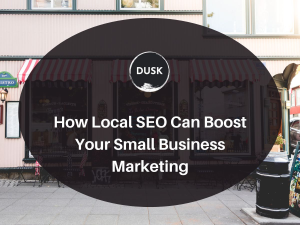Search engine optimization (SEO) is one of the most effective and affordable strategies for small business growth. However, despite its potential, many small business owners unknowingly make SEO mistakes that hinder their websites from ranking well on search engines like Google. These errors can result in missed traffic, lost leads, and slower growth.
Whether you’re a local retailer, service provider, or digital entrepreneur, avoiding these common pitfalls will put you in a better position to reach your audience and grow your business online. Let’s explore the top SEO mistakes small business owners should avoid and what you can do to fix them.
1. Ignoring Local SEO
Many small business owners focus heavily on general SEO strategies while completely overlooking local SEO. If your business serves a physical location or specific region, optimizing for local searches is essential. For example, a roofing company in a mid-sized city should aim to rank for terms like “roof repair near me” rather than just “roof repair.”
Local SEO affects visibility on Google Maps and “near me” search results, which are often the first touchpoints for potential customers. Whether you operate in a growing suburb, a college town, or a densely populated metro area, proximity-based searches matter
To fix this, ensure your business name, address, and phone number (NAP) are identical everywhere. Set up your Google Business Profile, choose the right categories, upload high-quality photos, and encourage reviews. Also, list your business on local directories like Yelp and Foursquare or city-specific directories such as “Austin Local” or “LA Startups.”
2. Using the Wrong Keywords
Keyword selection is the foundation of SEO. Yet, many business owners choose keywords based on assumptions or overly generic phrases. For example, targeting “marketing agency” is too broad for a small firm hoping to attract clients nearby.
Instead, focus on long-tail keywords—specific phrases like “affordable SEO agency for startups” or “digital marketing services for small businesses in the Northeast.” These terms attract users with clear intent and less competition. Understanding how long-tail keywords work reveals how they can improve search visibility without the uphill battle of ranking for broad, highly competitive terms.
Use keyword research tools like Google Keyword Planner or Ubersuggest to identify trends and opportunities specific to your niche and region. The success of a startup SEO case study shows just how effective proper keyword targeting can be.
3. Overlooking On-Page SEO Basics
You might have a beautifully designed site with excellent content, but if the page isn’t optimized, it won’t rank well. On-page SEO includes meta titles, descriptions, headers, image alt text, and internal linking, all essential for making your content discoverable and user-friendly.
Imagine a page about “custom web design services” that doesn’t include that phrase in the title or description. Google may not understand its relevance. Likewise, images without alt text can’t be indexed properly or assist visually impaired users. Aim for clear titles, concise meta summaries, natural keyword use, and strong internal navigation between related pages.
4. Publishing Low-Quality or Thin Content
Some business owners treat blogging as a checkbox, publishing brief or repetitive content without depth. Thin content hurts more than it helps, especially in competitive spaces like law, real estate, or e-commerce.
Search engines value content that answers questions offers solutions and is backed by credible insights. For example, a real estate investor could write a detailed blog on “How to Sell a House Without an Agent,” using step-by-step guides, relevant market statistics, and legal considerations.
Strong content writing in SEO success involves writing with purpose, content that informs, engages, and supports your SEO goals. Aim to be helpful, original, and actionable.
5. Not Tracking SEO Performance
SEO isn’t a one-time project; it’s a long-term strategy. Yet many business owners forget to track results or don’t know how. Without performance data, you can’t tell what’s working or where to improve.
Google Analytics 4 tracks site behavior, while Search Console shows how your pages appear in search results. You can monitor impressions, clicks, rankings, and errors that impact performance.
Imagine running an ad campaign and seeing high traffic but low conversions. Analytics might reveal that visitors are landing on a poorly optimized page or that your mobile experience is subpar. These insights guide better decision-making and boost return on investment.
6. Ignoring Mobile Optimization
With over 60% of internet traffic now coming from mobile devices, mobile optimization is no longer optional. Google uses mobile-first indexing, meaning your mobile site determines your ranking before your desktop site does.
If your layout breaks on small screens, text is too small to read, or buttons aren’t easily clickable, visitors will bounce, and Google will take note. This applies whether your business is located in a quiet town in Oregon or a fast-paced neighborhood in New York.
Use Google’s Mobile-Friendly Test to analyze your site. Ensure text is readable, buttons are spaced properly, images load quickly, and no horizontal scrolling is needed. Mobile UX affects not just SEO but conversions, too.
7. Neglecting Technical SEO
Technical SEO may seem intimidating, but it’s the glue that holds your website together. It includes aspects like site speed, crawlability, security (HTTPS), duplicate content, and proper use of canonical tags.
Let’s say a service page for “custom signs in Phoenix” loads in 8 seconds or has multiple duplicate URLs indexed. That hurts your rankings and confuses Google.
Tools like Screaming Frog or Ahrefs can help audit your site. You can also use a technical SEO checklist to fix common issues. Prioritize loading speed, clean URLs, structured data, and XML sitemaps.
8. Buying Backlinks or Using Black Hat Techniques
In the rush to rank, some businesses turn to shortcuts, buying backlinks, stuffing keywords unnaturally, or using private blog networks. These practices may produce temporary boosts but ultimately result in penalties, de-indexing, or loss of credibility.
A smarter strategy is to earn backlinks naturally by creating valuable content. For example, you could write guest articles for industry publications, contribute to roundups or expert interviews, list in trusted business directories, or collaborate with local organizations.
Instead, build authority through ethical link building: publish guest posts, get listed in trusted directories, partner with local organizations, and create link-worthy resources, such as infographics or local guides.
9. Inconsistent Content Publishing and Updates
Stale or outdated content sends negative signals to both users and search engines. A blog post from 2020 referencing old marketing trends doesn’t hold up in 2025.
Create a content calendar that fits your bandwidth. Even one high-quality post per month is better than sporadic, rushed content. Also, revisit old posts, update statistics, fix broken links, and improve formatting for readability and accessibility.
Blogging can help showcase expertise while supporting consistent SEO performance and community trust. Repurposing content is also valuable. Turn a blog post into a social media series, a downloadable checklist, or an email newsletter. This multiplies your effort across platforms.
10. Not Hiring or Consulting an SEO Expert When Needed
There’s only so much you can DIY before you hit a wall. If you’re managing day-to-day operations and seeing stagnant traffic or inconsistent leads, it’s time to bring in a professional.
SEO agencies specialize in supporting local businesses with tailored strategies that consider local search trends, competitor activity, and industry benchmarks.
You don’t always need a full-service agency. A one-time SEO audit, content strategy, or locally focused optimization package can deliver measurable results. These targeted services help identify issues, streamline your efforts, and prevent expensive trial-and-error, making them ideal for small businesses looking to grow efficiently without long-term commitments.
How to Build a Strong SEO Foundation for Small Businesses
Avoiding common SEO mistakes is just the beginning. To truly compete online, small businesses must establish a solid SEO foundation that supports long-term visibility and growth. Here’s how to start building one today:
- Conduct a Full Website Audit: Before making improvements, evaluate your site’s current standing. Use tools like Google Search Console, Screaming Frog, or Ahrefs to scan for broken links, slow pages, missing meta tags, or crawl issues. An audit helps you prioritize what needs fixing first.
- Master Keyword Intent: It’s not enough to use keywords; you need to understand why people are searching for them. Are they looking to buy, learn, or compare? Map keywords to pages based on the user’s intent: use informational keywords for blog content and transactional ones for service/product pages.
- Prioritize Local SEO Signals: If you’re a service-based business or operate from a physical location, your SEO strategy must include local elements. Optimize your Google Business Profile, get listed in relevant directories, and earn local backlinks from blogs, chambers of commerce, or partnerships.
- Create Evergreen, Valuable Content: Rather than chasing trends, create cornerstone content that remains relevant over time. “How-to” guides, FAQs, buyer’s guides, and comparison posts drive consistent traffic and can rank for months or even years with regular updates.
- Make SEO Part of Your Ongoing Marketing: SEO isn’t a one-time task. Incorporate it into your marketing calendar alongside social media, email, and paid ads. Update old pages, track rankings, and adapt your strategy based on new data and customer behavior.
Conclusion
You don’t need a massive budget to make SEO work; you just need a smart, consistent approach. Avoiding common mistakes, such as poor keyword targeting, ignoring local search signals, or publishing thin content, will help you gain visibility and convert traffic into real results.
SEO is less about tricking the algorithm and more about showing up when and where your audience is searching. No matter where you’re based, whether in the Midwest, East Coast, Pacific Northwest, or the South, focusing on fundamentals will give your business a long-term edge in the digital space.






